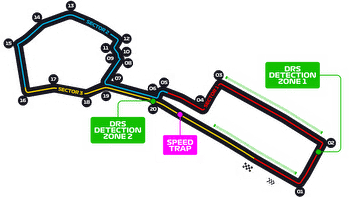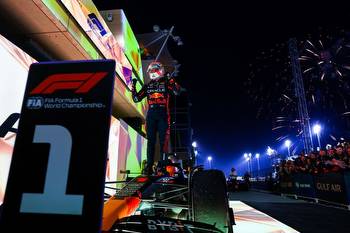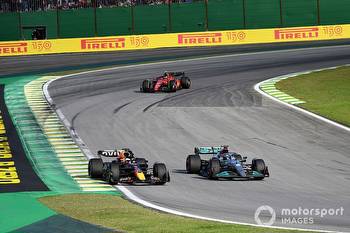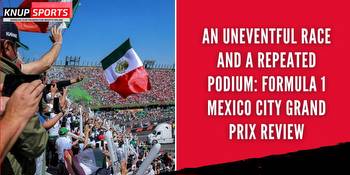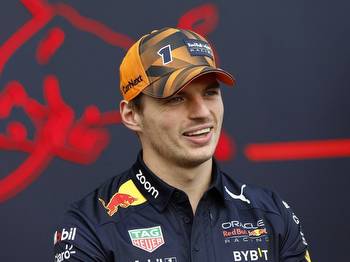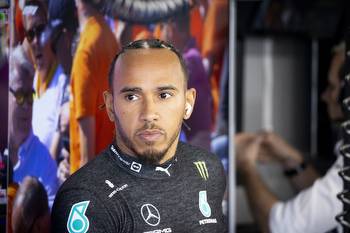STRATEGY UNPACKED: How both Mercedes jumped the Ferraris in the British Grand Prix
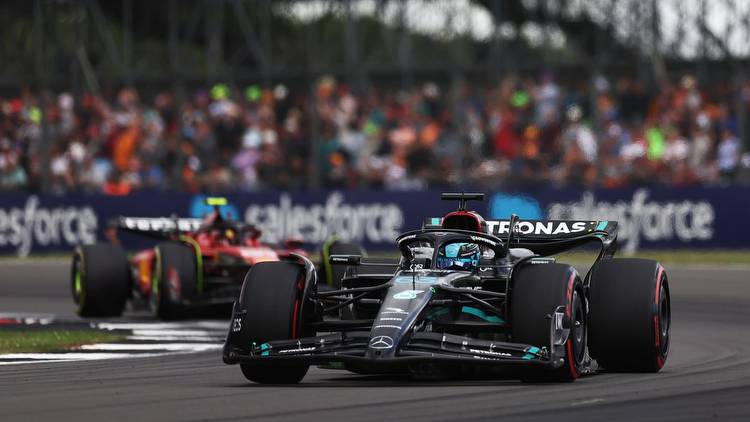
The two Mercedes of George Russell and Lewis Hamilton started the British Grand Prix P6 and P7 respectively, with the Ferraris of Charles Leclerc and Carlos Sainz ahead in P4 and P5.
At the chequered flag the Mercedes had gained positions to finish third and fifth whereas Ferrari had dropped back to P9 and P10 – so how did the Silver Arrows jump ahead of the scarlet cars? Former Aston Martin strategist Bernie Collins explains all…
Silverstone was largely expected to be a one-stop race featuring the medium and hard compound tyres. The soft tyre was expected to be limited on tyre life with high degradation, so was not predicted to be useful for longer stints in the race.
Mercedes decided to split their cars, with Russell starting on the soft tyre and Hamilton on the medium.
In the race they then avoided the hard tyre, with both drivers using softer compounds – whereas Ferrari stuck to the planned medium to hard combination.The tyre strategies and stop laps for both teams are shown below.
On Friday during second practice, only Carlos Sainz's Ferrari was running and collecting any data – with Leclerc confined to the garage with an electrical fault and therefore unable to complete a single lap.
This resulted in Ferrari only having one set of long run data – primarily on the soft tyre – from Sainz. Additionally, during FP1 neither Ferrari had run the hard tyre so they approached the race with no information from their own car on that compound.
And remember that Pirelli had updated the tyre construction for this event, so the teams and drivers were dealing with a new variable for which they had no historic data.
Mercedes meanwhile ran both cars on the hard tyre in first practice, and although in FP1 this data is of limited value due to track condition, it is useful for driver feedback.
During the FP2 long runs, Mercedes again split the start tyres, with Hamilton on softs and Russell on mediums, before they switched Russell onto the softs.
During these long runs, Mercedes managed to control degradation on the soft to around a third of that seen by Sainz on his car. Therefore, even on Friday night, Mercedes would have been more positive about the option to utilise the softer tyre compounds.
This analysis on the soft tyre combined with the reduced track temperature on Sunday allowed Mercedes the confidence to start one driver on this compound.
The additional information that Mercedes gained across drivers during the opening stint of the race on both compounds allowed each driver to extend the first stint beyond what was expected pre-race and therefore avoid having to use the hard tyre.
This feature is currently not available because you need to provide consent to functional cookies. Please update your cookie preferences
In the first stint Russell was told by his engineer “target plus eight” – indicating they wanted him to run eight laps more on the soft tyre than originally planned. That is 15% of the total race distance, so represents a large change to expectation.
The reduced degradation and extended tyre life resulted in the optimum race strategy changing from the pre-race prediction of a medium and hard plan, to a soft and medium combination.
The chart below shows free air races with no influence from traffic or car pace. It simply shows the difference in race time though tyre selection and stop lap.
The chart would show a flat horizontal line if a driver completed the same lap time every lap. Moving upwards shows a lap faster than this average lap and the sharp fall downwards represents a pit stop. This shows that a soft and medium race in any order saved around 11 seconds in race time over a medium and hard race strategy.
On Sunday, 14 drivers started on the medium tyre. Of these drivers both Ferraris, both McLarens and Zhou Guanyu in the Alfa Romeo stuck to the planned hard tyre second stint. Others converted to the soft.
The chart below shows the race trace for the top 10 finishers. Both Ferraris appeared to stop early in response to the potential undercut threat from the Mercedes, who were running very close behind on track.
The early stop – particularly for Leclerc – would have required a hard tyre for a longer final stint, with the medium unable to last until the end of the race.
Post-pit stop, Leclerc was given the gap and target lap times he needed to hit to ensure he remained ahead of Russell after his stop, but without having to pit again.
Leclerc later told his team over the radio “I think we stopped a bit early guys” – and he was right. Ferrari stopped him early to try to protect his lead over Russell – but the end result was him losing out to the Mercedes.
Things were then made worse by the Safety Car deployment when Leclerc was already on 14-lap-old hard tyres, and his additional pit stop lost him further positions.
In the other Ferrari, Sainz was given the gap to Hamilton behind and asked to try and maintain a 1.5-second lead for undercut protection. When this wasn’t possible, the team asked him to box.
Sainz's strategy was closer to optimum than Leclerc’s, but the Spaniard lost out to Hamilton and Fernando Alonso with the Safety Car timing. And to make matters worse, Sainz then lost three positions while on the hard tyres to others on softer compounds: Sergio Perez and Alex Albon on the softs, and Leclerc on the mediums.
This feature is currently not available because you need to provide consent to functional cookies. Please update your cookie preferences
Mercedes went into the Grand Prix armed with more information and less concerns on tyre degradation on the softer compounds.
And during the race both Mercedes – as they were running behind the Ferraris and therefore had no fear of being undercut – were able to extend and learn enough to switch the strategy on the fly.
It is always easier for the car behind (Mercedes) to extend and it is always difficult for the car ahead (Ferrari) to avoid the undercut threat.
In this case, the slower race time and Safety Car deployment sealed the deal.

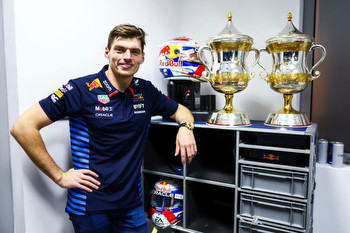
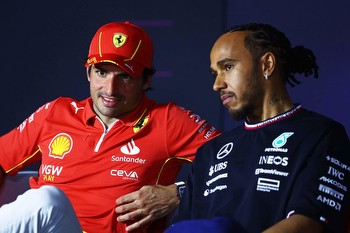





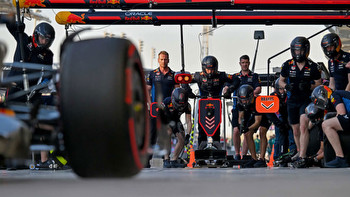


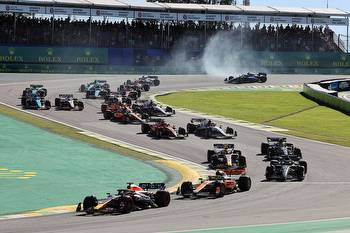

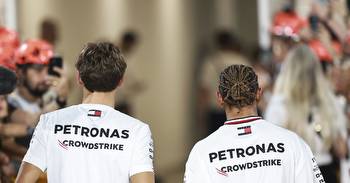
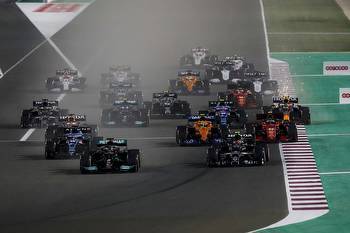
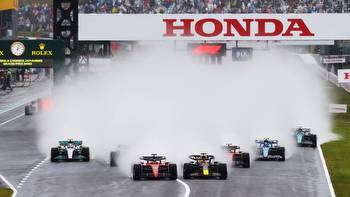
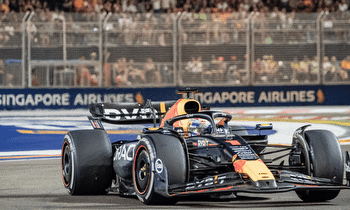



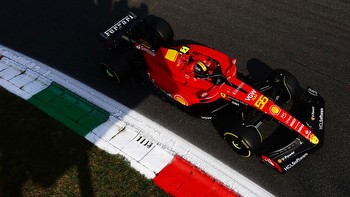
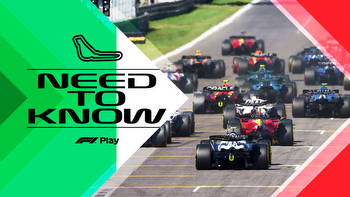
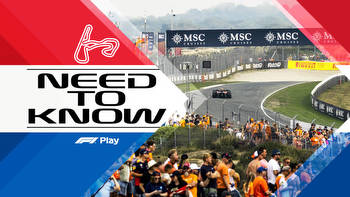
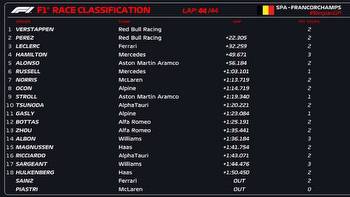
![F1 results: Max Verstappen wins Austrian Grand Prix ahead of Charles Leclerc and Sergio Perez [Video]](/img/di/f1-results-max-verstappen-wins-austrian-grand-prix-ahead-of-charles-leclerc-and-sergio-perez-video-1.jpg)
